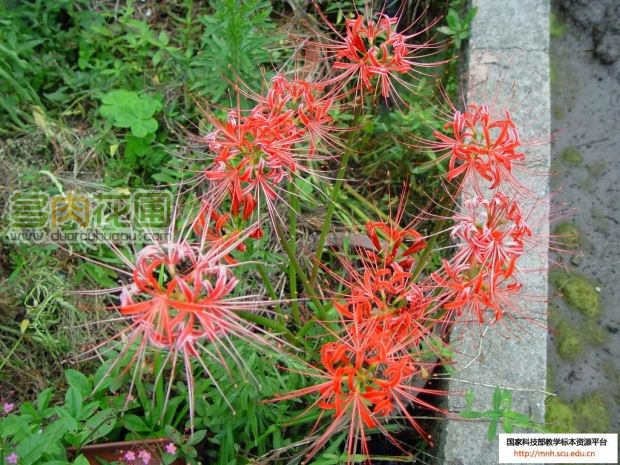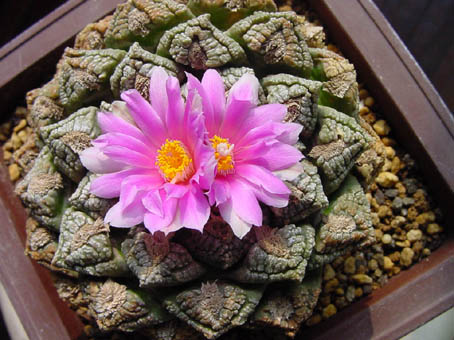Culture methods and matters needing attention of Lycoris radiata
Temperature
Many members of the family Amaryllidaceae love warm climates, so Solanum mongolicum, Magnolia, spider lily, purple flower, onion orchid, leek orchid and fireball all belong to this category, suitable for flat cultivation. The suitable temperature for growth of Lycoris chinensis and Orchid is between + 5 degrees Celsius and + 5 degrees Celsius, so it is more suitable for planting in the north. The orchid should avoid too hot and humid environment in summer. Daffodils like cold and cool, and flat land can only be planted in winter and spring; vertical tube flowers and kangaroo feet should be planted at middle and high elevations.
Sunshine
Most of the bulbous flowers of Amaryllidaceae like to grow in a sunny environment, which is suitable for all-day or half-day light, and insufficient light will lead to poor flowering. Chinese daffodils raised in the water still need more than three hours of sunshine every day, otherwise they will grow and fall in vain. The gentleman orchid likes the shady environment, should avoid the direct sunlight in summer, the sunshine is better between 50% and 70%.

2. Distribution of producing areas
Origin: China, Japan in East Asia, and Vietnam in Southeast Asia.
Domestic distribution: there are wild populations in the Yangtze River Basin and southwestern provinces of China, and most of them are cultivated in domestic gardens.
Foreign distribution: Japan, Vietnam, Malaysia and other places also have distribution.
Viewing places: at home, there are mainly Dali and Lijiang in Yunnan, China, as well as Taroko and Matsu in Taiwan, while Japan is the main place in foreign countries.
3. Ornamental value
The garden can be used for flowers under the forest, flower border planting or natural planting between mountains and rocks. Because of its flowering time leaves, it should be better with other shade-tolerant herbs.
There is a long history of cultivation in China, which is recorded in Flower Mirror. The leaves of Lycoris radiata are dark green in winter, covering the courtyard, breaking the dry atmosphere of winter. In late summer and early autumn, scape stems emerge from the ground, with bright and beautiful flowers, male cores and styles protruding from the base, which are very beautiful, which can be planted in the courtyard, potted plants, water culture, cut flowers and so on.
4. Methods of reproduction
It was propagated by ball division, sowing, scale base cutting and tissue culture, mainly by ball division method.
Bulb reproduction: the plant is dug up during the dormant period or after flowering, and the epiphytic bulbs near the mother ball are removed and planted, which can bloom in about one or two years.
Sowing method: generally only used for cross breeding. As the seed has no dormancy, it should be sown immediately after seed collection, and the radicle can be seen after 15 days at 20 ℃. When sowing in the natural environment, only a few seedlings pull out a leaf in the first growth cycle, and can be transplanted once in the seedling stage. It takes about 4 to 5 years from sowing to flowering.
Scale base cutting method: the cleaned bulb base was cut into eight parts in meter shape, and the cutting depth was about the length of the bulb. After 3 months of disinfection and shade drying, adventitious buds can be seen at the junction of scales and substrate, and bulbs can be formed gradually, and seedlings can be formed after separation and cultivation.
The method of tissue culture and propagation: using MS medium, pedicel and ovary as explants, after culture, callus could be produced at the incision. Adventitious roots can be formed after 1 month and adventitious buds can be formed after 3-4 months. Adventitious buds and corms can also be produced by using pedicels and stemmed scales as explants.
5. Cultivation techniques.
Potted plants like scattered light, do not like strong light, so the light is not too strong. The flowers on the other side usually have no requirements for soil. But after all, it is a southern flower, so the soil should be acidic, a little sandy, breathable and permeable. The other shore flower has ornamental value all the year round, with leaves but no flowers, flowers without leaves.
Lycoris has strong adaptability, the bulb has dormancy, the north needs potted ornamental, and the Lycoris planted at the end of May should also be able to blossom. The suitable time for cultivation in the north: it should be planted in spring (April-May). Most varieties like warm climate, the maximum temperature is no more than 30 ℃, the ten-day average temperature is 24 ℃, which is suitable for the growth of Lycoris radiata. After sowing for 10 days, the root system grew vigorously and the leaves grew out of the ground successively. In winter, the daily average temperature is more than 8 ℃, and the lowest temperature is 1 ℃, which does not affect the growth of Lycoris radiata. It should not be watered too much, or it will rot the rhizome.
The culture method of Lycoris radiata, also known as Lycoris safflower, is native to China and is mainly distributed in the provinces of the Yangtze River Basin. Strong cold resistance, like semi-shade, but also resistant to exposure, like wetting, but also resistant to drought. All kinds of soil can grow, and the loose and fertile humus soil is the best. Have the habit of summer dormancy. The leaves are green and vibrant in winter.
Culture: bulb culture is mainly divided, and the bulbs are dug up and planted after the leaves have just withered in spring or after flowering in autumn. Divide the ball after planting at intervals of 3-4 years. The natural seed setting rate is not high, the seed maturity is poor, sowing and breeding, germination is irregular. It takes 5-6 years for seedlings to bloom. Cultivation: strong stress resistance, simple management, planting depth of 8-10 cm is better. Before the summer flowers, such as when the soil is too dry, it should be fully watered to facilitate the unearthed stems. Fertilization was applied before the flower stem was extracted in August, and once again after the young leaves germinated and unearthed in autumn, the leaves germinated neatly. Diseases and insect pests: anthrax mainly occurs, and 50% carbendazim wettable powder is sprayed 500 times every other month. Application: safflower Lycoris in summer and autumn safflower in full bloom, very gorgeous, arranged in the grass, under the forest or planted in the perennial mixed flower border, can form a beautiful scene in early autumn. It is not only an ideal green ground cover plant in winter, but also an excellent material for potted and cut flowers.
- Prev

Culture methods and matters needing attention of tortoise shell peony
The reproduction of tortoise shell peony is very difficult, and it can be grafted by sowing or picking young bulbs. Because the fruit ripening period of the plant is very long, and it is very difficult to germinate, the germination rate + score is low, and the seedling growth is very slow. The growth rate of rock peony is only faster than that of tequila peony. Grafting can use three-angled arrow as rootstock.
- Next

Planting techniques of clover
Clover has strong cold tolerance, some of the old leaves are withered and yellow when the temperature drops to 0 degrees Celsius, the leaflets on the main root close to the ground, stop growing, but still remain green. Therefore, the green period is very long. It is not strict with the soil, can adapt to various soil types, and grows well on the acidic soil.
Related
- Fuxing push coffee new agricultural production and marketing class: lack of small-scale processing plants
- Jujube rice field leisure farm deep ploughing Yilan for five years to create a space for organic food and play
- Nongyu Farm-A trial of organic papaya for brave women with advanced technology
- Four points for attention in the prevention and control of diseases and insect pests of edible fungi
- How to add nutrient solution to Edible Fungi
- Is there any good way to control edible fungus mites?
- Open Inoculation Technology of Edible Fungi
- Is there any clever way to use fertilizer for edible fungus in winter?
- What agents are used to kill the pathogens of edible fungi in the mushroom shed?
- Rapid drying of Edible Fungi

